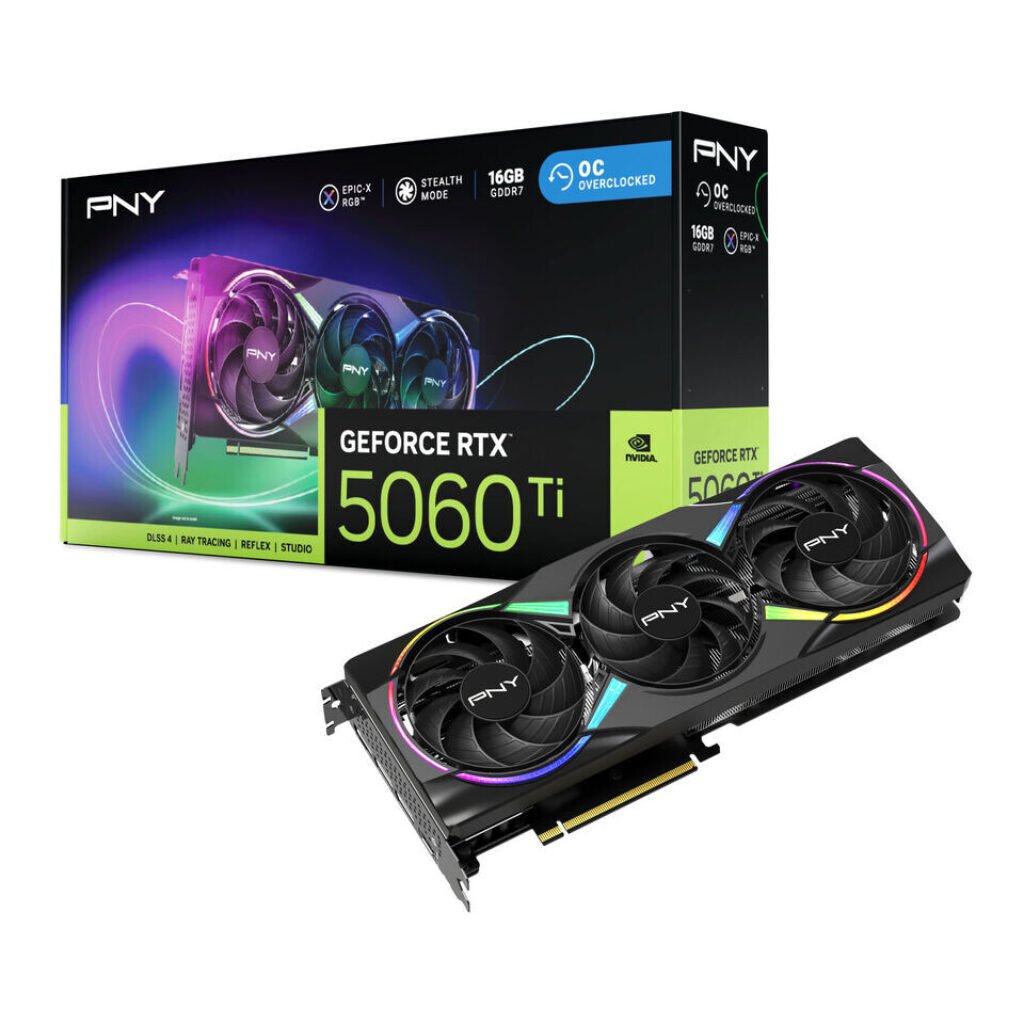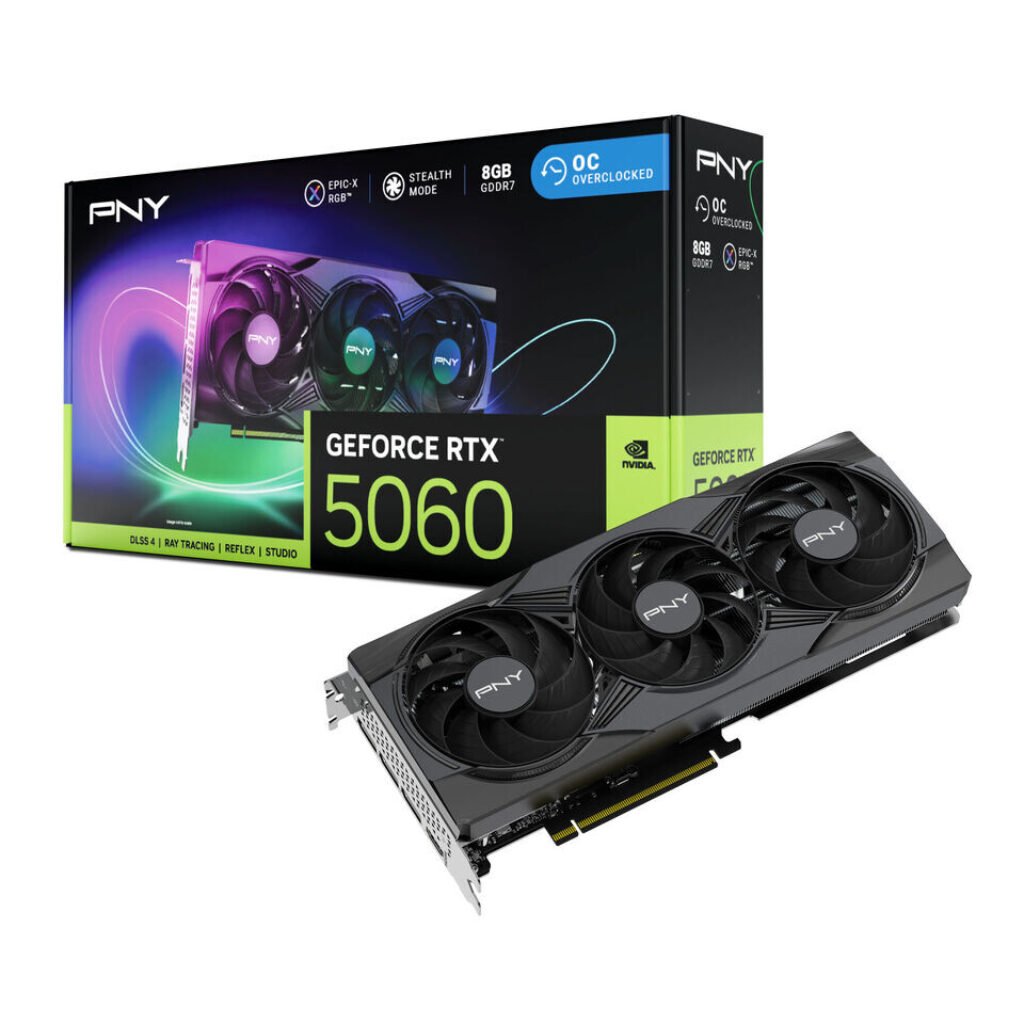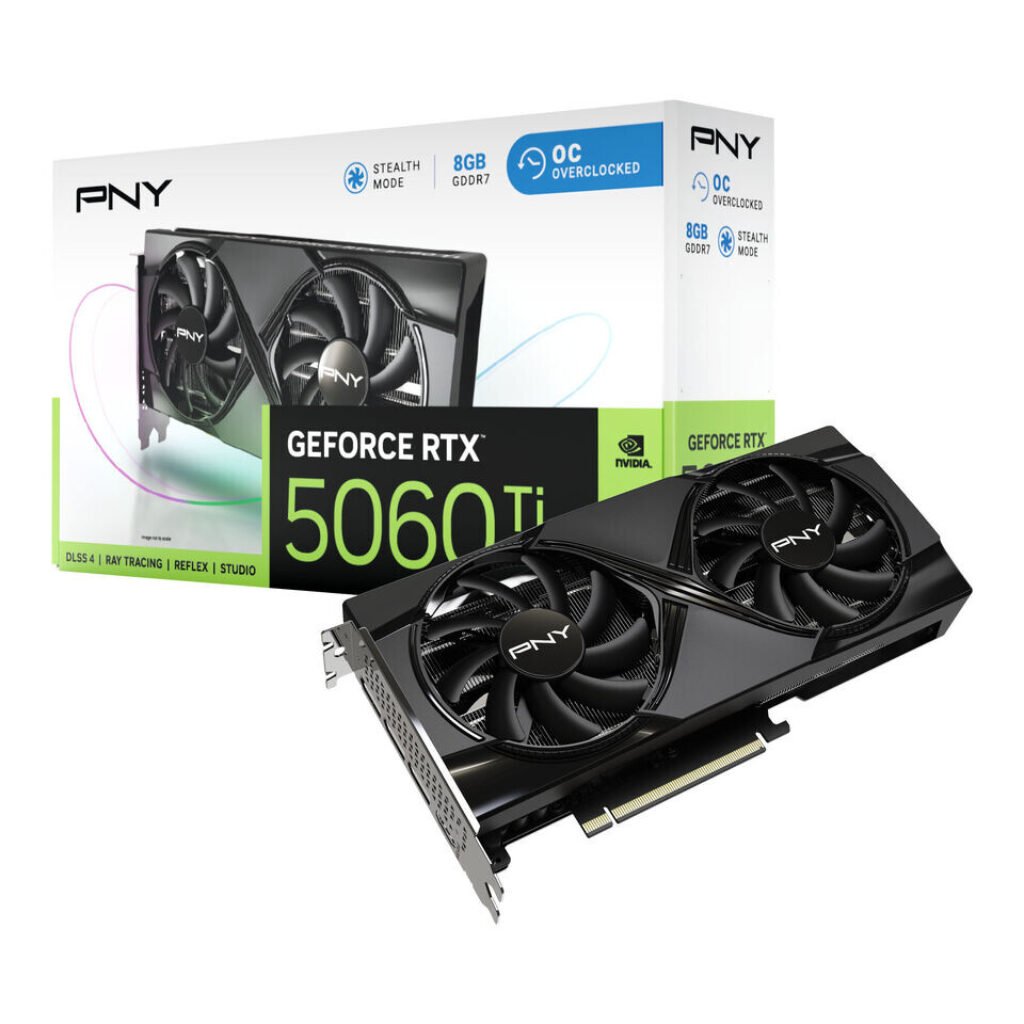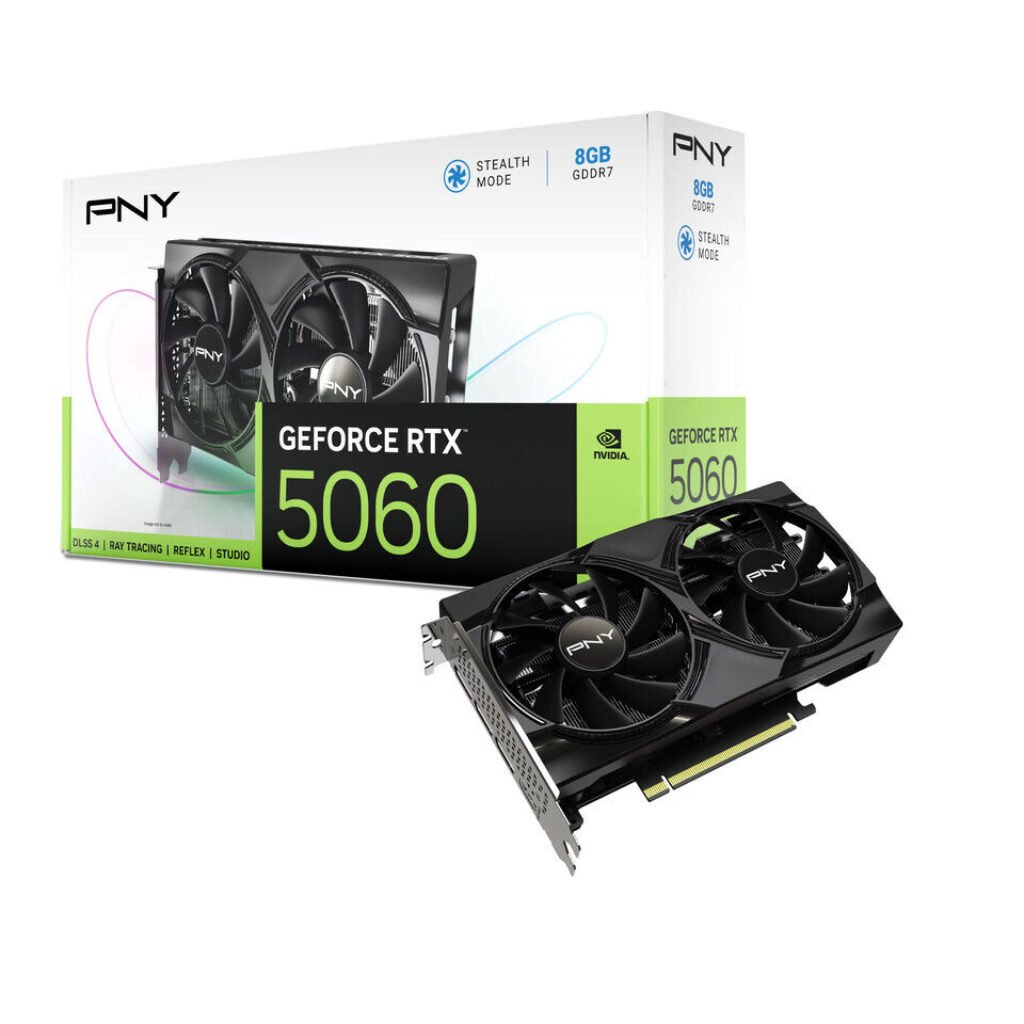PNY has officially announced the addition of the GeForce RTX 5060 Ti and RTX 5060 graphics cards to its range of NVIDIA GeForce RTX 50 Series GPUs. These naew models, based on NVIDIA’s latest Blackwell architecture, aim to deliver improved performance and efficiency for both gamers and content creators. The lineup includes the GeForce RTX 5060 Ti in 16 GB and 8 GB memory configurations, along with the standard GeForce RTX 5060 model.
The RTX 5060 family is designed to enhance the gaming experience at 1080p resolution, bringing updated features and increased horsepower to mainstream gaming systems. With a focus on real-time ray tracing and support for DLSS 4, these GPUs are positioned to provide a noticeable boost in performance compared to the previous generation.


PNY’s new cards come in multiple variants to suit a variety of builds. The RTX 5060 Ti will be offered in both Dual Fan and Triple Fan configurations, while the RTX 5060 will include a compact Single Fan design. This variety gives system builders flexibility, particularly for small form factor PCs or tighter builds where space is a concern.
A number of models will ship with factory overclocks to deliver additional performance out of the box. PNY also includes support for its VelocityX software, which provides users with tools to monitor and adjust GPU metrics such as clock speeds, fan behavior, and thermal output. Select models will feature EPIC-X RGB lighting, allowing users to personalize their builds with adjustable ARGB effects.
For users interested in small-scale AI and creative workloads, these cards integrate dedicated AI Tensor Cores. PNY highlights compatibility with NVIDIA’s NIM (NVIDIA Inference Microservices), a set of AI services optimized to run on RTX GPUs, although specific performance metrics or application benchmarks were not disclosed at launch.


The PNY GeForce RTX 5060 Ti series will be available starting April 16. The standard RTX 5060 models are scheduled for release in May. Pricing details have not been officially confirmed, but are expected to follow the typical tiered structure seen in past midrange launches.
With this release, PNY continues to expand its offerings for gamers and creators looking for a balance between performance, power efficiency, and system compatibility. As the RTX 50 Series ecosystem grows, more detailed benchmarks and comparisons will help determine how these new cards stack up against existing options in both the RTX 40 and RTX 30 Series families.







